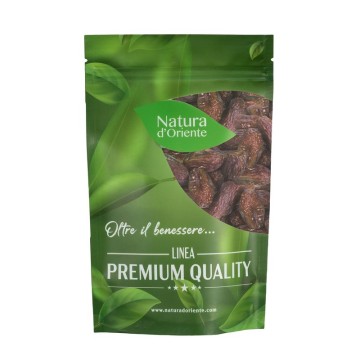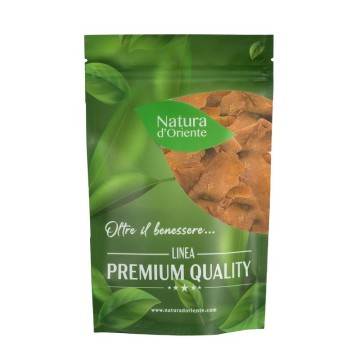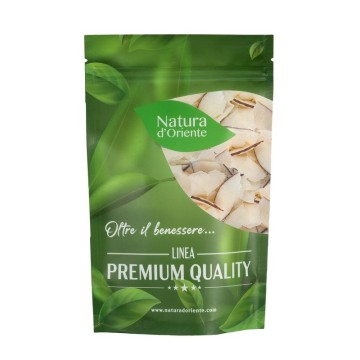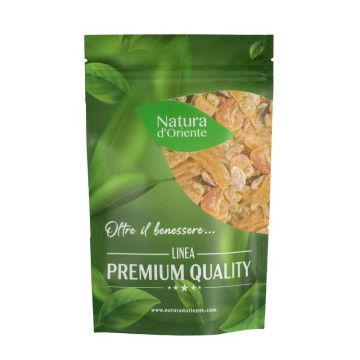Dried lime
Limes are tart, round citrus fruits and immediately strike with their bright green. On a nutritional level, they are fruits with a high content of vitamin C, antioxidants and other beneficial nutrients. Let's open an overview of the benefits of limes, and their use.
Dried lime: properties and benefits
Since lime fruits are rich in antioxidant nutrients, they can help strengthen the well-being of the immune system, reduce the risk factors associated with aging.
antioxidants are compounds that defend cells from free radicals, ie molecules that in high quantities can create conditions for heart disease, diabetes and various types of cancer. Limes are rich in active compounds that work as antioxidants in the body, such as ascorbic acid (vitamin C), flavonoids, limonoids, kaempferol and quercetin.
Vitamin C in lime, in particular, is a nutrient that can help strengthen the immune system, and increase the production of white blood cells, which help protect your body from infection.
Taking vitamin C helps shorten the duration of colds and reduces skin inflammation by stimulating the production of collagen - a protein essential for wound repair.
In addition to stimulating collagen with vitamin C, the antioxidants in lime have properties that can promote skin beauty, and counteract age-related skin changes. Oxidative stress, in fact, leads to signs of premature aging, and is a condition resulting from an imbalance between free radicals and antioxidants in the body.
The citric acid contained in limes can help counteract the risk of the formation of kidney stones, which are small mineral crystals. Stones can form inside the kidneys when urine is very concentrated or when you have high levels of stone-forming minerals, such as calcium, in the urine. Citric acid can increase citrate levels by binding the stone-forming minerals in the urine and preventing them from forming.
Also known is the contribution of acids, contained in lime as in citrus fruits, which help the action of gastric juices during the digestive process. The citric acid contained in this fruit supports the body when it has to dissolve fats during digestion.
The vitamin C contained in the lime fruit, even in the dehydrated lime version, can promote the absorption of iron from plant-based foods.
The fruit boasts numerous properties also in terms of mineral salts. Limes have good amounts of potassium, a mineral that is effective in helping the elimination of precipitates and compounds that usually settle in the kidneys and bladder.
Origins and History of cultivation
According to some scholars, lime or Kime, also known as lime , is a cross between lemon and cedar, although it has some differences with these two citrus fruits.
Citrus aurantifolia, in fact, is a citrus fruit native to Asia, from the regions of Malaysia and India, and the plant is considered by many to be a natural hybrid of Citrus medica (cedar) with another species.
Unlike other citrus, which are subtropical plants, lime prefers a tropical climate and this explains why it is little known in the Mediterranean area, with the exception of Egypt.
Lime is a fruit that began to spread when it was exported from India to England, to supply British ships that had to undertake long voyages of exploration.
The abundance of vitamin C present in lime was a natural remedy for scurvy, a disease that affected sailors and decimated naval crews.
The Portuguese brought the plant to Mexico and Florida in the 16th century, where it is still grown.
Today the lime is grown mainly in Latin and Caribbean America, Mexico and Southeast Asia. The fruit is used in the confectionery industry as a flavoring for drinks and dishes ; it is a key ingredient in some pickles and chutneys.
Dehydrated lime is often prepared as a ingredient for cocktails and snacks . Lime citrate and citric acid are also prepared from the fruit.
 Plant and Fruit
Plant and Fruit
The Lime plant is Citrus aurantifolia, of the Citrus genus of the Rutaceae family.
There are many species of lime such as Key lime (Citrus aurantifolia), Persian lime (Citrus latifolia), Desert lime (Citrus glauca) and Kaffir lime (Citrus hystrix)).
Each of these species has unique characteristics that are valued for several reasons. Key lime, for example, is smaller, more acidic and more aromatic than Persian lime.
The tree grows about 5 meters tall and, if not pruned, becomes shrub-like. Its branches are irregular, with small evergreen leaves and pointed thorns. The small white flowers are usually in clusters.
The fruit, which can be oval or spherical, usually has a diameter of about 3-4 cm, the skin is thin and greenish-yellow in color when the fruit is ripe.
The fruit produces a tender, juicy, yellowish green and acidic pulp.
Limes outperform lemons in both acid and sugar content. There are, however, some varieties with little citric acid, known as sweet limes - grown in Egypt and some tropical countries.
Nutritional values of Lime
Dried lime is rich in nutrients, and low in calories compared to other types of dried fruit - around 300 kcal per 100 grams.
This dehydrated fruit contains little fat, provides minerals, vitamins, fiber.
The dietary values of Lime show good levels of vitamin C (about 30 mg / 100 g) and vitamin A (about 30 IU), folate, niacin, riboflavin (B12 with about 0.03 mg / 100 mg ) good levels of pantothenic acid (about 0.2 mg / 100 g), and pyridoxine.
Even in the dried Lime version, minerals are available such as potassium (about 100 mg / 100g), calcium (about 30 mg / 100 g), magnesium (about 6 mg / 100 g), phosphorus (about 18 mg / 100 g), zinc (about 0.10 mg / 100 g) and iron (about 0.6 mg / 100 g).
How to consume dehydrated lime in the kitchen or as a snack
Dried limes with peel and slices are tasty snacks, real hunger-breaking snacks, which however can also be used for various sweet preparations, for decorations and cocktails.
With dried lime slices you can decorate ice creams, cakes, cupcakes, muffins and other specialties, whether they are sweet or sour-sweet.
Those who love the slightly acidic taste of lime can add it in slices as an ingredient in some salads or dishes - dehydrated limes are also used to obtain, by crushing, a seasoning for fish or grilled meats.
Sliced dehydrated lime can be added to yogurt and dried fruit and cereal mixes, and "chips" are also used to flavor tea and infusions.
Slices can be an excellent garnish for drinks, usually cocktails, and can be added to beer to give them a different taste.
Dried lime: side effects and contraindications
Limes are generally safe to consume, with little or no side effects.
However, if you are allergic to other citrus fruits, limes could cause food allergy symptoms. Some people may experience episodes of gastric reflux from eating limes, or heartburn.
Like other nuts, dried Lime contains sugars, which are not recommended for those with high blood glucose levels and diabetes.









 No reward points for this product.
No reward points for this product.
 Plant and Fruit
Plant and Fruit



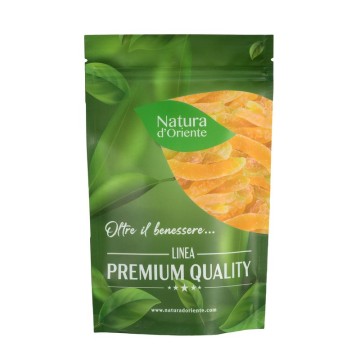
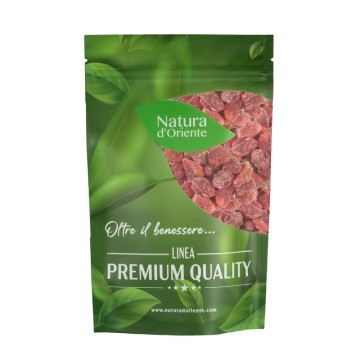
![Natural dehydrated grapefruit without added sugar [NATURADORIENTE]](https://www.naturadoriente.com/10190-home_default/pompelmo-naturale-disidratato-senza-aggiunta-di-zucchero.jpg)
